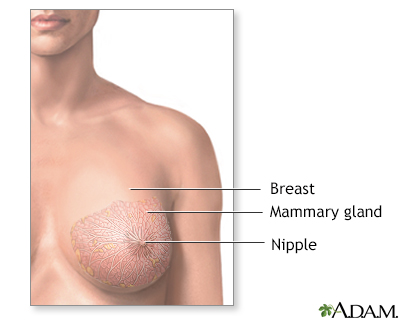Breastfeeding - resources
Information
The following organizations are good resources for information on breastfeeding and breastfeeding problems:
Breastfeeding problems
Health experts agree that breastfeeding is the healthiest option for both mom and baby. They recommend that babies feed only on breast milk for the ...

- American College of Obstetricians and Gynecologists -- www.acog.org/womens-health/faqs/breastfeeding-your-baby
- La Leche League International -- www.llli.org
- March of Dimes -- www.marchofdimes.org/baby/breastfeeding-your-baby.aspx
- Centers for Disease Control and Prevention -- www.cdc.gov/breastfeeding/
- US Department of Agriculture WIC breastfeeding support -- wicbreastfeeding.fns.usda.gov
- US Department of Health & Human Services -- www.womenshealth.gov/Breastfeeding
- American Academy of Pediatrics -- www.healthychildren.org/English/ages-stages/baby/breastfeeding/Pages/default.aspx
Reviewed By
Jennifer K. Mannheim, ARNP, Medical Staff, Department of Psychiatry and Behavioral Health, Seattle Children's Hospital, Seattle, WA. Also reviewed by David C. Dugdale, MD, Medical Director, Brenda Conaway, Editorial Director, and the A.D.A.M. Editorial team.
Disclaimer



 All rights reserved.
All rights reserved.